Growing monarda, commonly known as bee balm, wild bergamot, and horsemint, is very popular among home gardeners and pollinator enthusiasts. This genus of flowering plants sits in the mint family (Lamiaceae).
Native to North America, Monarda species thrive in a variety of climates. They’re widely cultivated for their striking flowers, aromatic foliage, and ecological benefits.
The most well-known species include Monarda didyma (scarlet bee balm) and Monarda fistulosa (wild bergamot).
Monarda is valued for its bright, tubular flowers, which attract bees, butterflies, and hummingbirds, making it an excellent choice for pollinator-friendly gardens. The plant’s aromatic leaves are also used in herbal teas and traditional medicine for their soothing and antiseptic properties.
Additionally, Monarda is known for its resistance to deer and its ability to deter some insect pests, making it a useful companion plant in vegetable and herb gardens.
Monarda Growth Habit and Hardiness

Monarda can be grown as an annual or perennial, depending on the species and growing zone. Most commonly available varieties are perennial in Zones 3 through 9. Also, many species of Monarda readily self-seed and naturalize in the garden if conditions are favorable.
Monarda thrives in warm weather and is best grown in spring and summer. It typically begins active growth in late spring and flowers from mid to late summer, providing a long-lasting floral display that enhances garden aesthetics and supports pollinators. Some varieties may have extended bloom periods into early fall.
Popular Monarda Species
Some popular varieties of Monarda include:
Wild Bergamot (Monarda fistulosa)
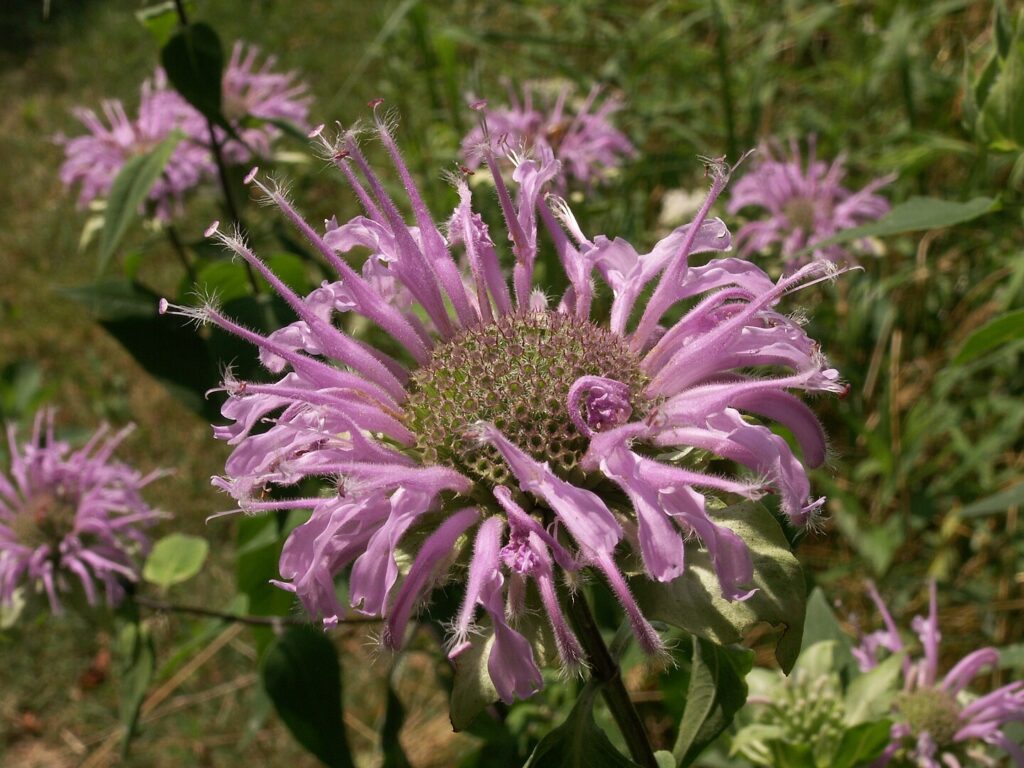
Wild bergamot is one of the most widespread Monarda species, found across North America in prairies, meadows, and open woodlands. This hardy perennial grows between 2 to 4 feet tall and produces soft lavender to pale purple flowers with a delicate, fringed appearance.
Wild Bergamot spreads through rhizomes, forming naturalized clumps that return year after year. Wild bergamot is highly attractive to bees, butterflies, and hummingbirds, making it a valuable addition to any pollinator-friendly garden. It thrives in well-drained soils and tolerates both dry and moderately moist conditions.
Scarlet Bee Balm (Monarda didyma)
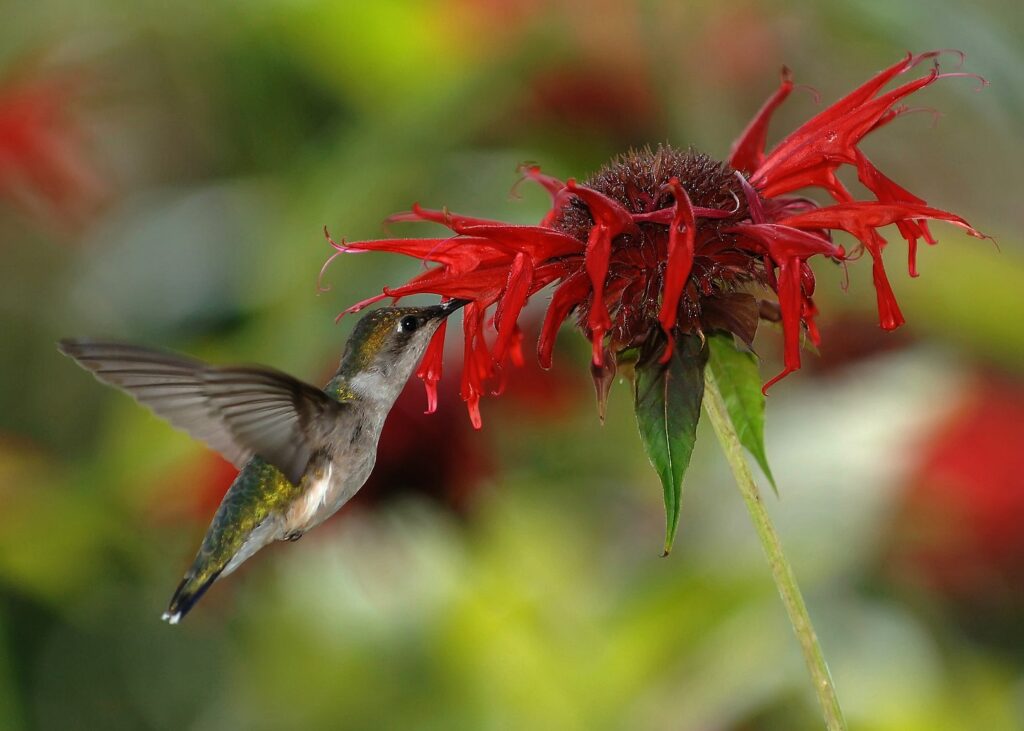
Scarlet bee balm is known for its striking red, tubular flowers, which bloom in dense clusters atop tall stems reaching 2 to 4 feet in height. This species thrives in moist, rich soils and is often found in woodland edges, streambanks, and rain gardens.
Scarlet bee balm is especially favored by hummingbirds, which eagerly seek out its nectar-filled blossoms. As a perennial, it spreads through rhizomes and forms thick, vibrant patches in garden beds.
Spotted Bee Balm (Monarda punctata)
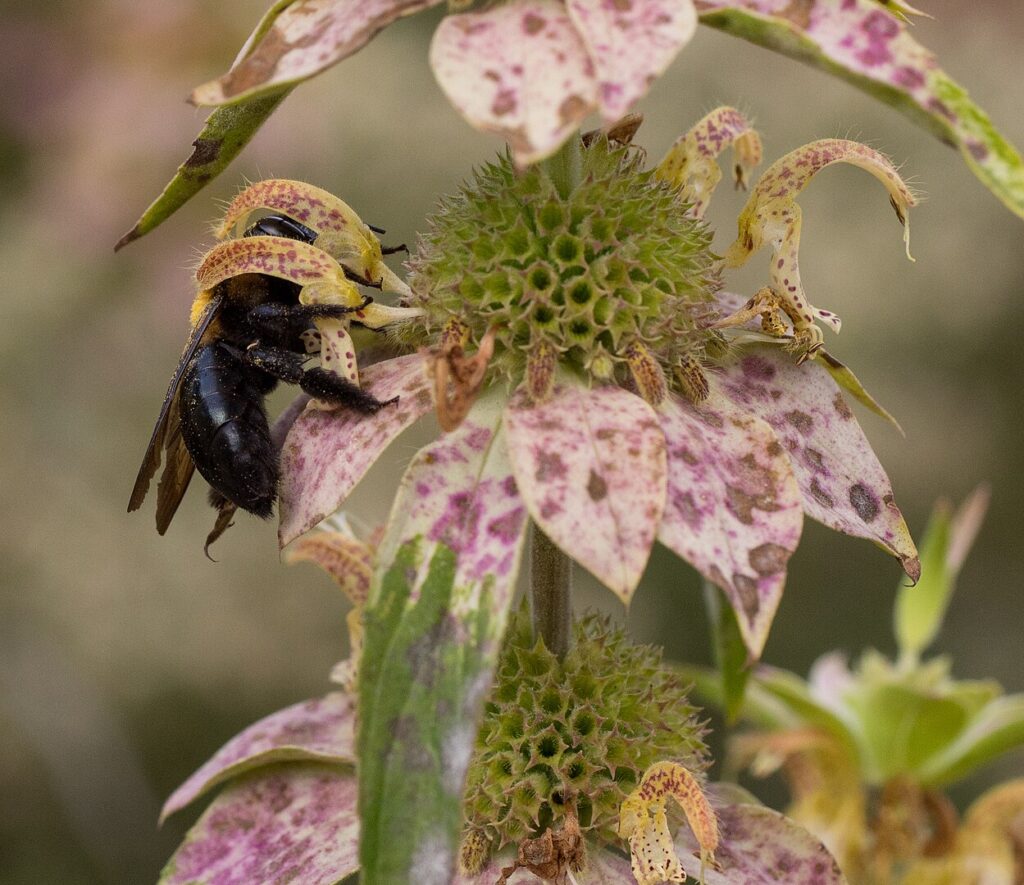
Unlike most Monarda species, spotted bee balm has a more open and airy structure, with stacked whorls of pale yellow flowers speckled with purple spots. The plant grows between 1 to 3 feet tall and is well adapted to dry, sandy, and well-drained soils.
Native to eastern and central North America, it is highly attractive to native bees, butterflies, and other beneficial insects. It is even native to Florida, thriving in the hot, humid climate. Its unique appearance and ability to thrive in challenging soils make it a great choice for xeriscaping and wildflower gardens.
Bradbury’s Bee Balm (Monarda bradburiana)
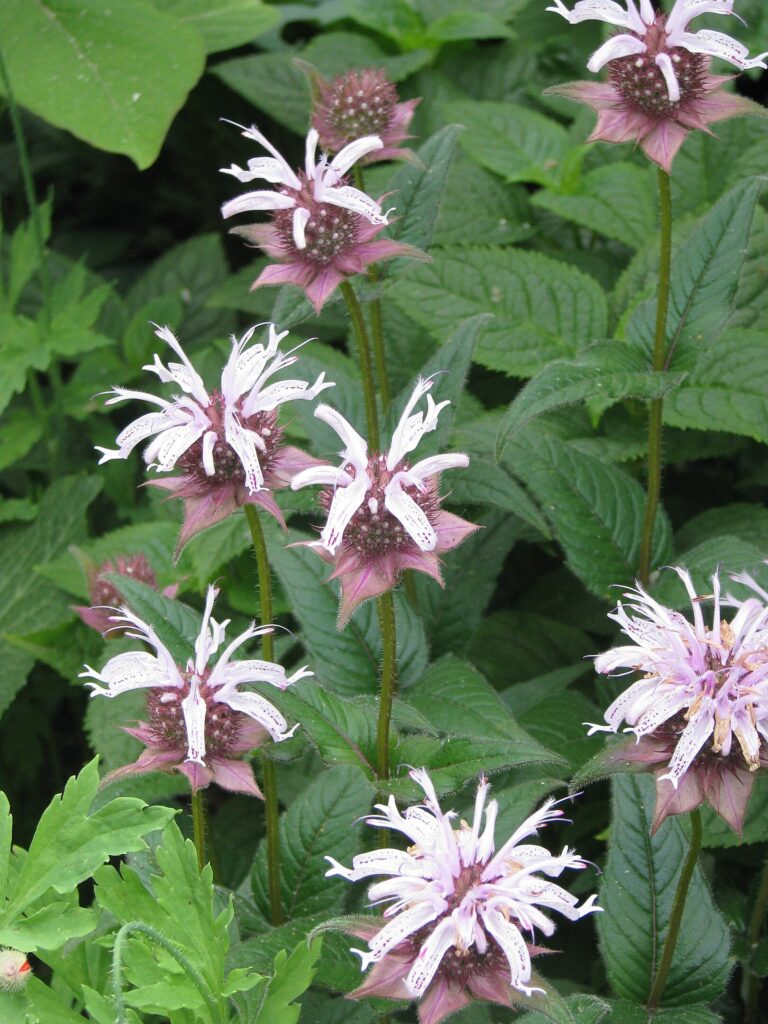
Bradbury’s bee balm is a shorter, clump-forming Monarda species that grows between 1 to 2 feet tall. Native to central and southeastern North America, it produces soft lavender-pink flowers in late spring to early summer, making it one of the earliest blooming Monarda species.
This species is highly drought-tolerant and thrives in dry, rocky soils, making it a good choice for prairie restorations and pollinator gardens.
Lemon Bee Balm (Monarda citriodora)
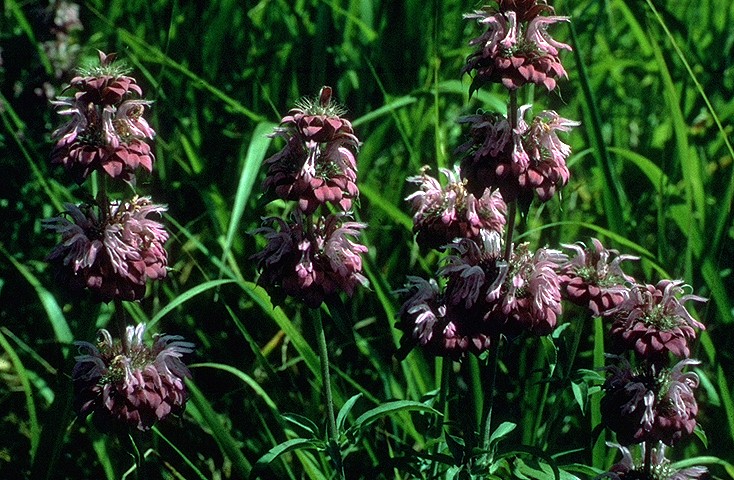
Lemon bee balm, also known as lemon mint, is an annual or short-lived perennial that reaches 1 to 3 feet in height. Its flowers range from pale purple to lavender and appear in stacked whorls along the stem.
The plant emits a strong citrusy fragrance when crushed, making it a favorite for herbal gardens. It is highly attractive to bees and butterflies and thrives in dry, sandy soils, making it well-suited for drought-tolerant plantings.
Western Bee Balm (Monarda pectinata)
Native to the western United States, western bee balm (or pony bee balm) is a drought-adapted species that grows in arid grasslands and foothills. This species features pale pink to lavender flowers with a delicate, frilly appearance. It stays relatively short, usually reaching between 1 and 2 feet tall. Western bee balm is an important nectar source for native bees and thrives in well-drained, sandy, or rocky soils.
Basil Bee Balm (Monarda clinopodia)
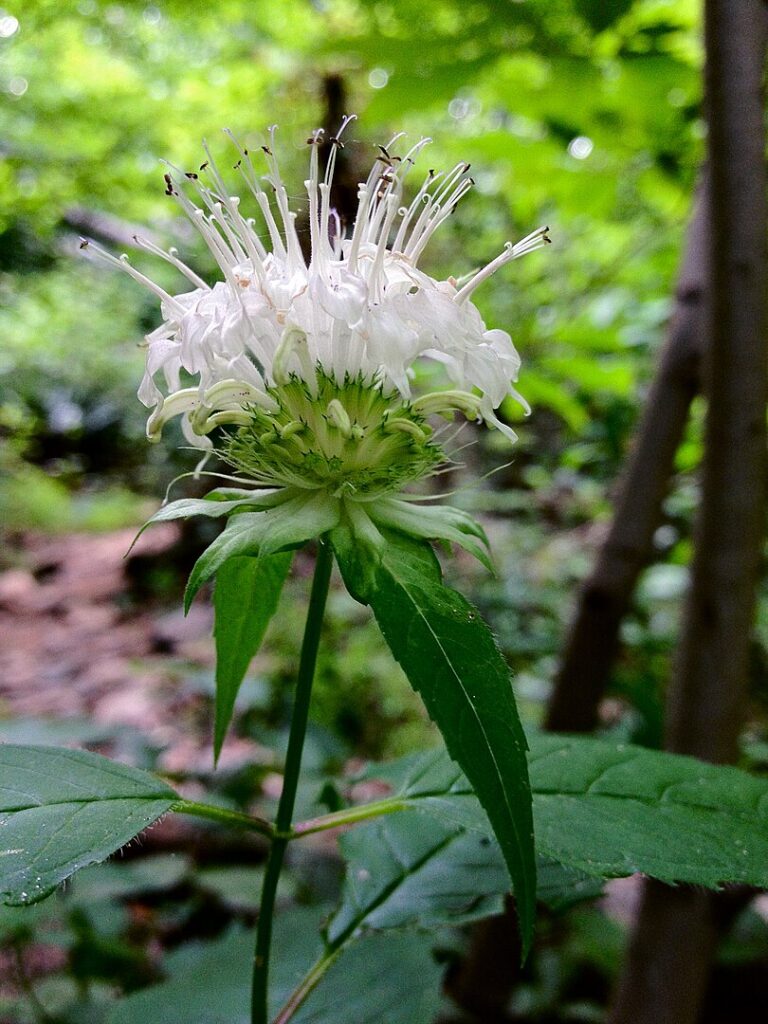
Basil bee balm (or white bee balm) is a tall, perennial Monarda species native to the eastern and central United States. Growing between 2 to 4 feet tall, it produces clusters of pale pink to white flowers with a hint of purple.
This species prefers moist, shaded environments such as woodland edges and riparian areas. It is highly attractive to pollinators, particularly long-tongued bees and butterflies.
Large-Leaved Bee Balm (Monarda media)
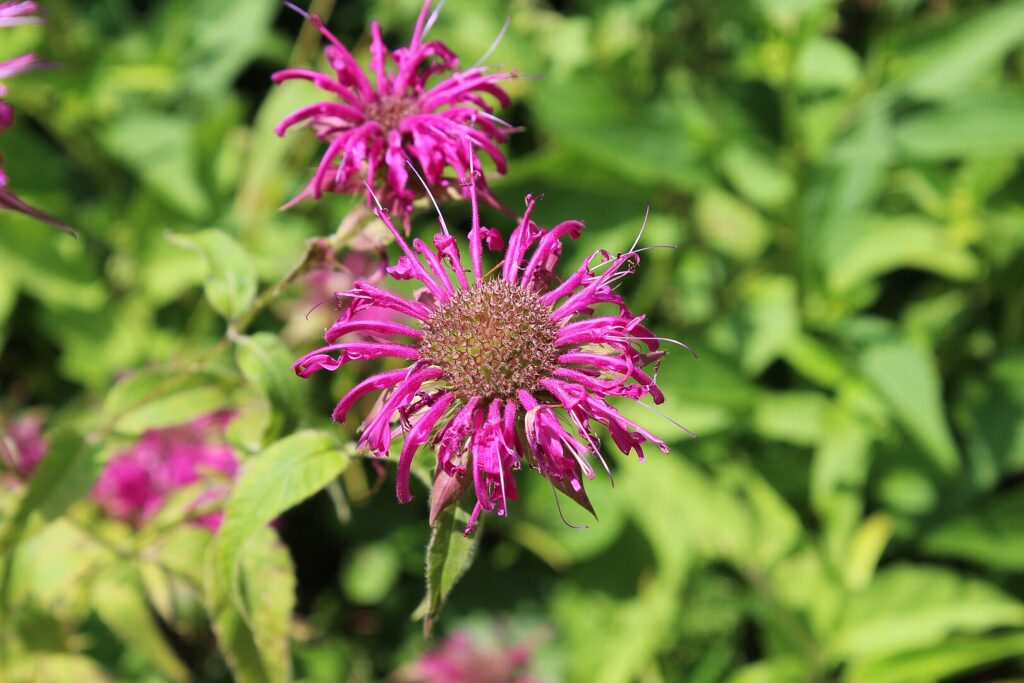
Closely related to Monarda didyma, purple bergamot or large-leaved bee balm features bright pink to purple flowers on stems that grow between 2 to 3 feet tall.
This species prefers moist, well-drained soils and partial shade, making it a great choice for woodland gardens and shaded pollinator plantings. It is a favorite of hummingbirds and bumblebees, providing a reliable nectar source throughout the summer.
Horse Mint (Monarda russeliana)
Horse mint is a unique Monarda species native to the southeastern United States. It grows in open woodlands and dry uplands, reaching heights of 2 to 3 feet. Its pale pink to lavender flowers are less showy than some other Monarda species, but it remains an excellent pollinator plant, especially for bees and butterflies.
It thrives in well-drained, sandy, or rocky soils and is highly drought-tolerant.
Thinleaf Bee Balm (Monarda lindheimeri)
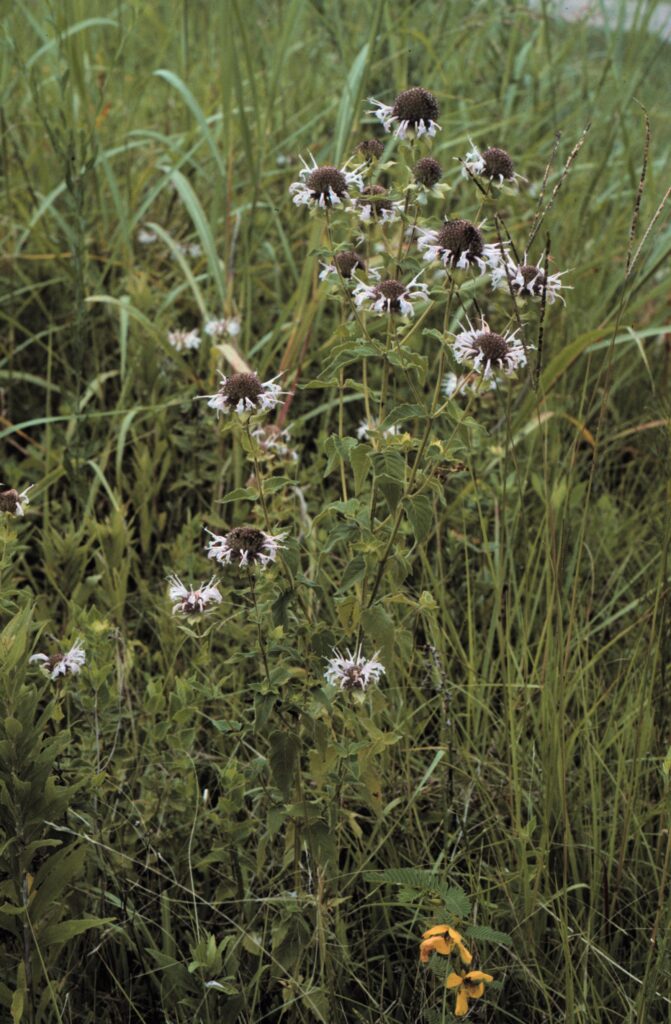
Thinleaf bee balm is a rare species found in parts of Texas and the southwestern United States. It grows between 1 and 3 feet tall and features delicate, pale pink to lavender flowers that attract a wide range of pollinators.
This species is well adapted to dry, well-drained soils and is often found in rocky, limestone-rich habitats.
When to Start Monarda Seeds
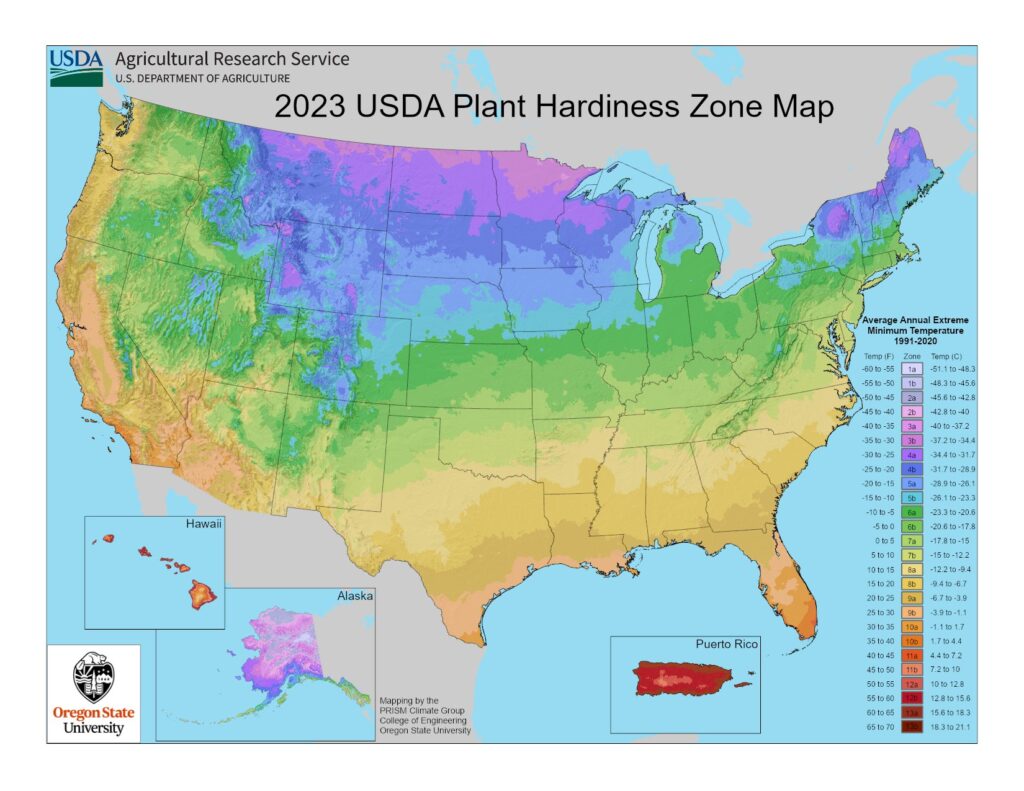
You can start Monarda seeds indoors or sow them directly into the garden, depending on the climate and growing zone. Since Monarda species are hardy perennials or annuals, the best planting time varies based on winter temperatures and frost dates.
In cooler climates, starting seeds indoors gives them a head start, while in warmer regions, direct sowing is a viable option.
Cold Climates Zones 3-5
- Indoors: Start Monarda seeds 8 to 10 weeks before the last expected frost. This typically falls between late February and early April, depending on the local frost date.
- Outdoors: Direct sow as soon as the soil thaws and warms in early spring, usually in April or May. Sow seeds in late autumn before the ground freezes, allowing for natural cold stratification.
Moderate Climates Zones 6-8
- Indoors: Start seeds indoors 6 to 8 weeks before the last frost, usually between mid-February and early March.
- Outdoors: Direct sowing is best done in early spring, from March to May, or in late fall for natural stratification over winter.
Warm Climates Zones 9-12
- Indoors: In hotter climates, start seeds indoors in late fall or early winter (November to January) for spring planting.
- Outdoors: Direct sow Monarda late fall to early winter, allowing the seeds to establish before the heat of summer.
Monarda Seed Preparation
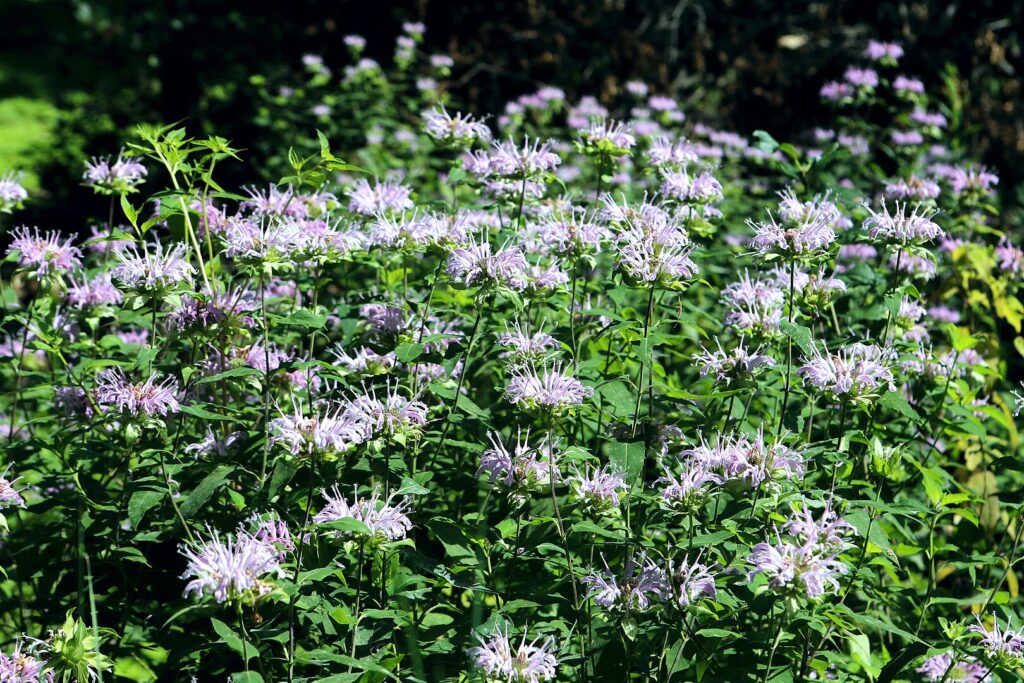
Monarda seeds, particularly from perennial species like Monarda fistulosa (Wild Bergamot) and Monarda didyma (Scarlet Bee Balm), do not absolutely require cold stratification to germinate. However, cold stratification greatly improves germination rates.
Studies have shown that stratification can significantly enhance germination success. For example, Monarda fistulosa seeds that underwent a 30-day cold stratification period demonstrated a germination rate of approximately 87% compared to an unstratified group, which had a much lower rate of around 40-50%.
Cold stratification mimics the natural chilling period that seeds would experience in their native environments, allowing them to break dormancy more efficiently. While fall sowing allows seeds to undergo natural stratification outdoors, artificial stratification can provide more control over the timing of germination.
How to Cold Stratify Monarda Seeds
- Prepare the medium: Moisten a paper towel, sand, or peat moss until damp, but not soaking wet.
- Mix seeds with medium: Place the Monarda seeds in the moist medium and mix well.
- Seal and refrigerate: Put the seeds and medium into a plastic bag or airtight container. Store it in the refrigerator at a temperature range of 33–41°F (1–5°C). Leave the seeds to cold stratify for 30 to 60 days.
- Check periodically: Every couple of weeks, check to make sure the medium is still moist and not moldy. If necessary, lightly mist it to maintain the right moisture level.
- Sow the seeds: After the cold stratification period, plant the seeds either indoors or directly in the garden, depending on your growing zone.
Natural cold stratification can occur when sowing seeds in the fall, as winter’s chill helps break dormancy, but the artificial method allows for more flexibility in timing.
Preparing a Garden Bed for Growing Monarda
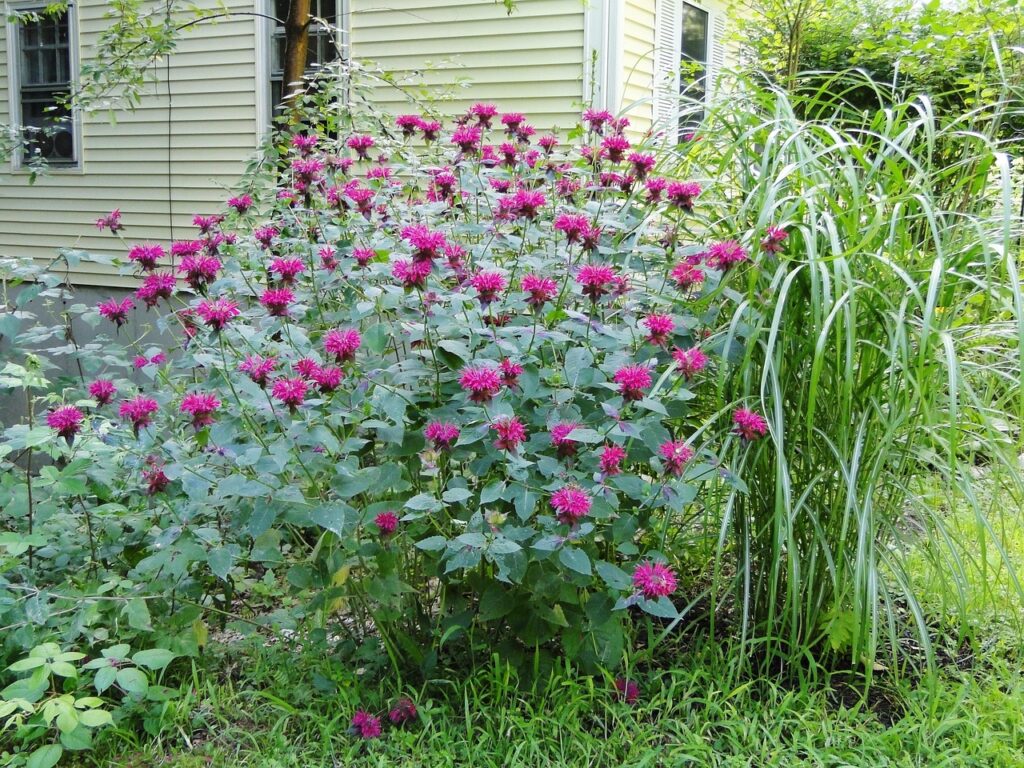
When preparing a garden bed for Monarda, it’s important to choose a location that aligns with the plant’s growth needs. Monarda species, especially the perennials, are best planted in full sun to partial shade. They thrive in areas that receive at least 6 hours of direct sunlight per day, though they can tolerate some light afternoon shade in warmer climates.
Additionally, consider the space available, as Monarda plants can spread and grow quite large, depending on the variety. A location with good air circulation is also beneficial to prevent fungal diseases, especially in more humid areas.
Light Requirements
Monarda plants generally prefer full sun, which encourages the most vibrant blooms and sturdy growth. However, they can tolerate partial shade, particularly in areas where summers are very hot.
In shaded locations, growing monarda may produce fewer flowers, but they will still grow well, though you may notice less robust flowering. Ensuring that Monarda receives adequate sunlight helps promote strong stems and prevents the plants from becoming leggy or sparse.
Moisture Requirements for Growing Monarda
Monarda plants are relatively tolerant of different moisture levels, but they prefer consistently moist, well-drained soil. They are not drought-tolerant and will perform poorly in dry conditions, especially during the warmer months.
It’s important to water regularly during dry spells, ensuring the soil stays evenly moist but not waterlogged. If your garden bed tends to hold water, consider improving drainage by amending the soil with organic material or planting Monarda in raised beds.
Monarda Soil Type Requirements
Monarda thrives in loamy, well-draining soil rich in organic matter. It prefers soil that is slightly acidic to neutral, with a pH ranging from 6.0 to 7.0. To prepare the bed, amend your soil with compost or well-rotted manure to increase organic content, improve drainage, and provide the necessary nutrients.
Monarda’s roots are sensitive to heavy, compacted soil, so it’s a good idea to loosen the soil to a depth of at least 6 inches. If your soil is too sandy or clay-heavy, adding organic matter will help balance its structure.
Supporting Growing Monarda
Monarda plants generally do not require trellising or support, as they are naturally bushy and sturdy. However, taller varieties with heavy flower heads, such as Monarda didyma, may benefit from staking or some light support to prevent the stems from bending or breaking.
If you’re growing Monarda in areas with strong winds or heavy rains, consider using small garden stakes or a cage to help the plants remain upright. Support is typically more of a precautionary measure than a necessity.
Growing Monarda Sowing Directly
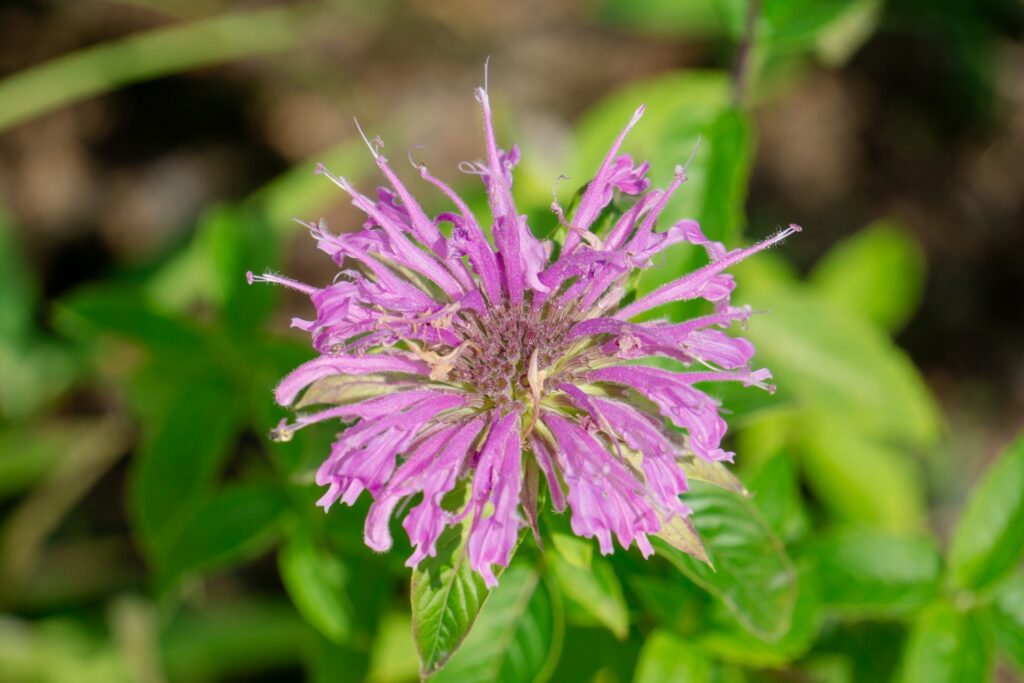
Sowing Monarda seeds directly outdoors is a straightforward and natural way to grow these vibrant plants. Here’s a step-by-step guide for sowing Monarda seeds in the garden:
Depth to Plant
Monarda seeds require light to germinate, so it is essential not to bury them too deeply. When directly sowing Monarda seeds, plant just below the surface of the soil.
Press seeds into moistened garden beds and cover with a thin layer of soil to help keep the seeds in place. Aim for a planting depth of no more than 1/16th 1/8th inches. Since Monarda seeds are small, it is important not to bury them too deep.
Moisture Requirements for Growing Monarda from Seed
Monarda seeds need consistent moisture to germinate successfully. Keep the soil evenly moist but not soggy. After sowing the seeds, water gently to avoid displacing them.
During the germination period, water regularly to maintain soil moisture, especially during dry spells. However, remain cautious of overwatering, as this can lead to waterlogged soil and potential seed rot.
Optimal Temperature for Germination
Monarda seeds germinate best in temperatures between 65°F and 75°F (18°C to 24°C). If you’re sowing them outdoors, wait until the soil temperature has reached this range in spring.
While you can sow monarda in the autumn for natural cold stratification over winter, the seeds are not as likely to germinate well in cooler soil conditions in the spring. So, it’s important to time sowing carefully, especially in regions with cooler spring temperatures.
Time to Germination
Monarda seeds typically take about 14 to 30 days to germinate, depending on the conditions and temperature. Warmer soil temperatures within the optimal range will encourage faster germination, while cooler conditions may extend the process.
It’s important to be patient and keep the soil consistently moist during this time. Once germination occurs, thin seedlings to give them more space to grow.
Starting Monarda Seeds Indoors
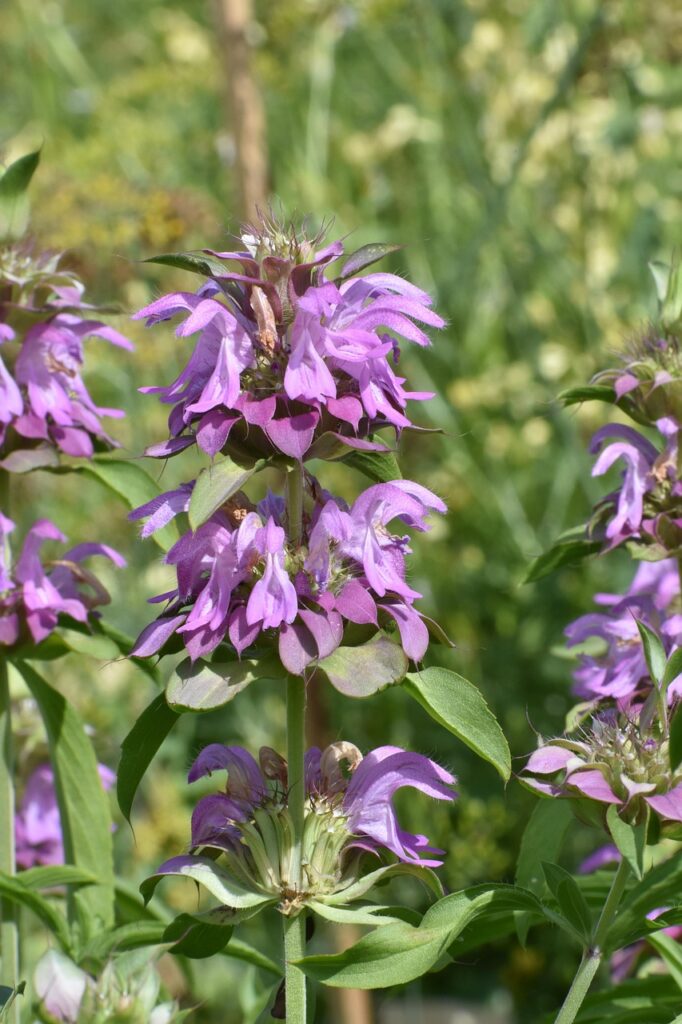
You can start Monarda indoors, which is ideal for gardeners in cooler climates or those with short growing seasons. Below is a condensed step-by-step guide to starting Monarda seeds indoors:
Choosing Seed Starting Mix for Growing Monarda
Use a light, well-draining seed-starting mix, such as a blend of peat moss, perlite, and vermiculite. This mix ensures good moisture retention while providing the aeration Monarda seeds need for healthy germination.
Best Containers for Starting Monarda Seeds Indoors
Choose containers that are at least 2 to 3 inches deep with drainage holes, such as cell trays or small pots. These containers allow proper root development and make transplanting easier later on.
Depth to Plant
When growing monarda from seed indoors, lightly press the seeds into the moistened starting mix. You can lightly cover them with a sprinkling of mix, but avoid covering them with too much soil since they need light to germinate.
Moisture Requirement for Growing Monarda Indoors
Keep the soil consistently moist but not soggy. Mist the surface gently to prevent displacing the seeds. You can also use starting trays with humidity domes to retain moisture, but be mindful that too much humidity can cause damping off.
I’ve often found that bottom-watering is the best method for starting monarda seeds indoors.
Optimal Temperature for Germination
Monarda seeds germinate best at temperatures between 65°F and 75°F. Place the seed trays in a warm location or use a heating mat to maintain the ideal temperature range if necessary. Florida gardeners shouldn’t require supplemental warmth except during the rare overnight freeze.
Light Requirements for Growing Monarda from Seed
Monarda seeds need light to germinate, so ensure they are in a bright location. If natural light is insufficient, use grow lights for 12-16 hours per day to promote healthy growth.
Time for Germination
Monarda seeds typically germinate in 14 to 30 days. The germination time depends on temperature and moisture levels, so keep the soil evenly moist and warm for best results.
Transplanting Growing Monarda Plants
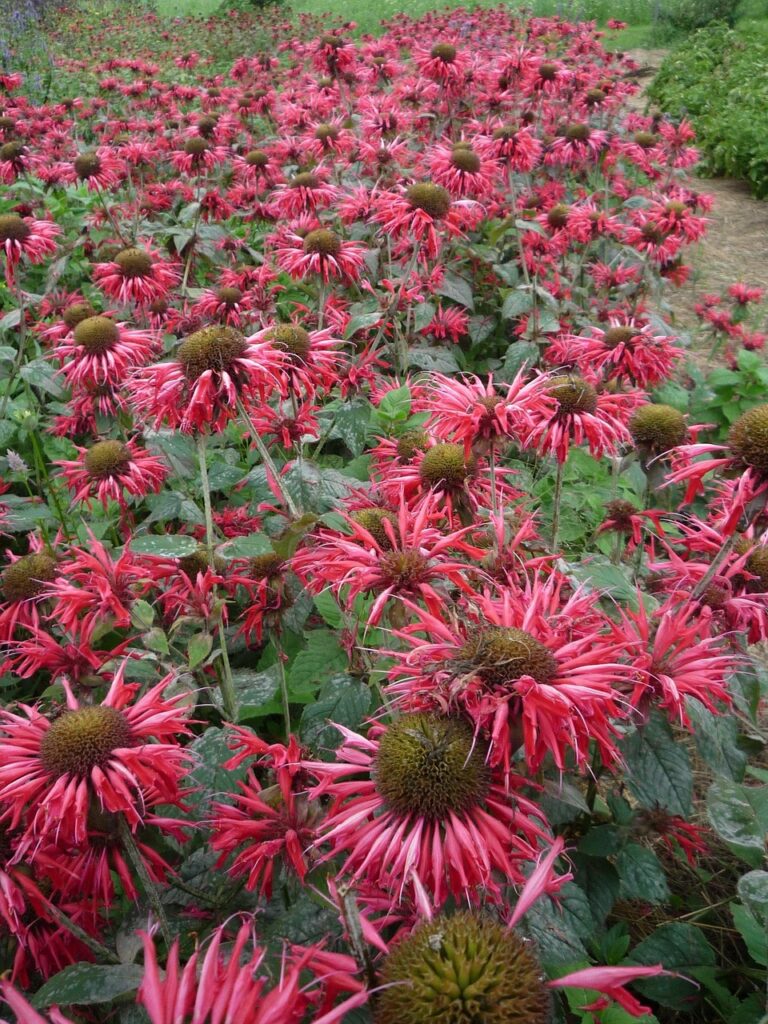
Transplant Monarda starter plants when they have developed sturdy stems and several sets of true leaves. These plants should be at least 4 to 6 inches tall and able to handle outdoor conditions.
It’s essential to wait until all risk of frost has passed, as Monarda is sensitive to cold. The ideal time to plant out is after the last frost date in your region, typically in late spring or early summer when the soil has warmed up to around 65°F (18°C).
Luckily, most gardeners in the South will find that occurs quite early in the spring, with South Florida remaining warm year-round.
Hardening Off Growing Monarda Starter Plants
Harden off growing monarda plants to gradually acclimate them to outdoor conditions. This helps prevent transplant shock from extreme variations in temperatures during the erratic spring months. Here’s a step-by-step guide to help you through the process:
- Start Slowly: Begin by placing your Monarda plants outside in a sheltered location, like a shaded porch or under a tree, for a couple of hours a day. Start this process about 7-10 days before planting them in the garden.
- Increase Exposure Gradually: Every day, increase the amount of time the plants spend outside. Gradually expose them to more sunlight, wind, and temperature fluctuations to help them acclimate.
- Monitor Weather Conditions: Avoid hardening off on windy or very hot days. If temperatures are extreme, bring the plants back indoors or place them in a shady spot.
- Introduce Full Sun: After 4-5 days of gradually increasing exposure, allow your Monarda plants to experience full sunlight for short periods. This will prepare them for the brighter conditions of the garden.
- Water and Care: Ensure the plants stay well-watered during the hardening off process, as they may dry out more quickly in outdoor conditions. Keep the soil consistently moist but not soggy.
Once the plants have been hardened off for about a week and the outdoor temperatures are consistently warm, they can be transplanted into their permanent garden spot.
Planting Out Monarda
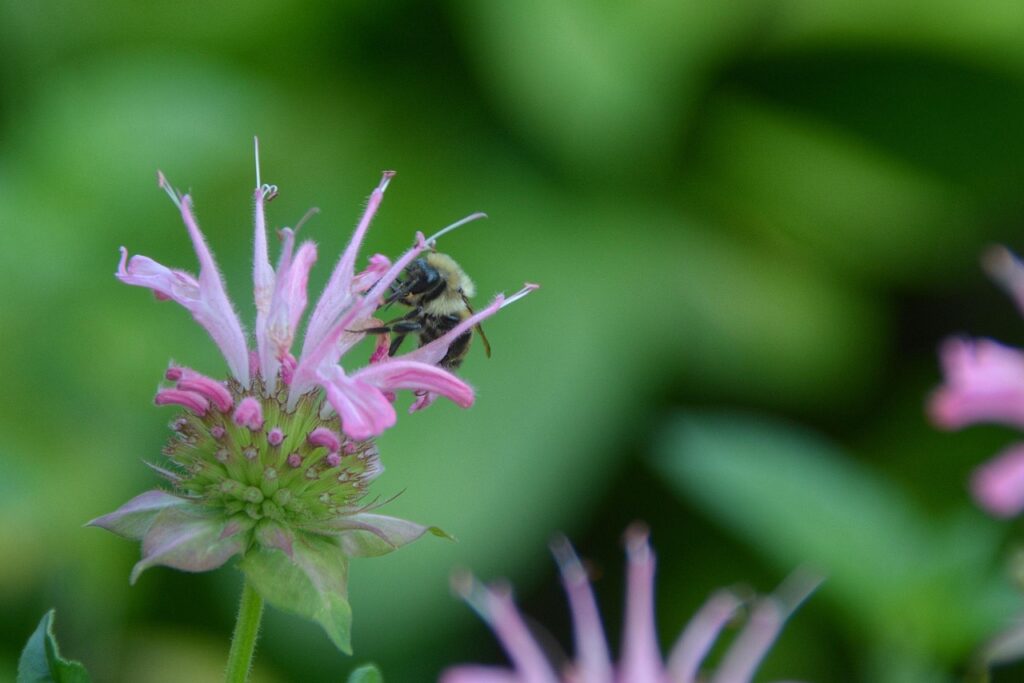
When planting Monarda plants in the garden, it’s important to ensure they are placed in conditions that promote healthy growth. Follow these step-by-step instructions to get your Monarda plants settled into their new home:
How Deep
Plant Monarda at the same depth as they were in their containers. The top of the root ball should be level with the soil surface. Avoid planting too deep, as this can lead to root rot.
Spacing
Space Monarda plants about 18 to 24 inches apart, depending on the variety. This allows enough room for air circulation and prevents overcrowding, which can encourage disease.
Mulching
Apply a 2 to 3-inch layer of mulch around the base of the plants if possible. Organic mulch, like shredded bark or compost, helps retain moisture, suppress weeds, and keep the soil temperature stable.
Watering
Water the Monarda plants thoroughly right after planting to help settle the soil around the roots. Continue to water consistently, keeping the soil moist but not waterlogged for the first few weeks as the plants establish themselves.
Once established, Monarda is fairly drought-tolerant but will thrive with regular watering during dry periods.
Caring for Your Monarda Plants
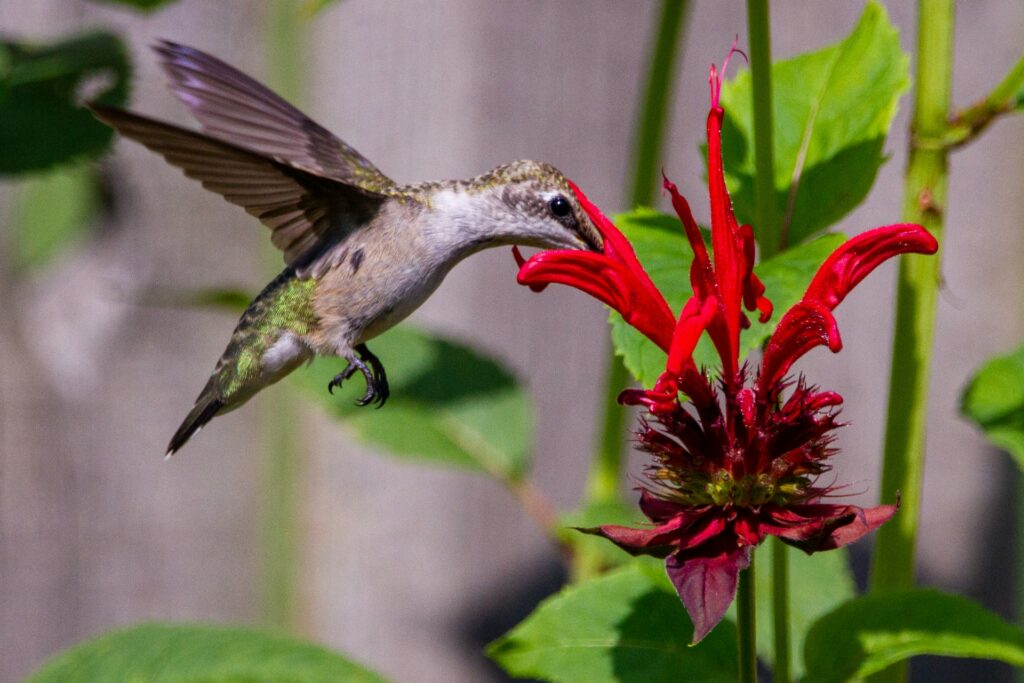
You want to keep your Monarda plants thriving and looking their best throughout the growing season. Here’s a detailed guide on how to care for Monarda plants:
Watering Monarda
Monarda prefers consistently moist soil, especially during the growing season. Water regularly, but ensure the soil is well-drained to avoid waterlogging, which can lead to root rot. Once established, Monarda is relatively drought-tolerant, but it still benefits from occasional watering during dry spells.
Fertilizing Monarda
Monarda doesn’t require heavy feeding, but it will benefit from a light application of balanced fertilizer in the spring, before new growth begins. Organic compost can also be added to the soil to improve fertility. Avoid over-fertilizing, as this can result in excessive foliage growth at the expense of flowering.
Weeding
Regularly remove weeds from around Monarda plants, as they compete for nutrients and water. Weeding can be done by hand or with a hoe, but take care not to disturb the roots of the Monarda. Applying mulch around the base of the plants will help suppress weed growth.
Pest and Disease Control
While Monarda is generally resistant to pests, aphids and powdery mildew can occasionally be an issue. If aphids are present, spray the plants with a strong stream of water or use an insecticidal soap.
Control powdery mildew by ensuring good air circulation around the plants and by removing infected foliage. Avoid using harmful chemical pesticides, as they can harm pollinators like bees.
Tips and Tricks for Growing Monarda

Monarda plants are relatively easy to grow, but a few tips and tricks can help ensure they thrive and look their best.
Right Plant, Right Place
While most species of monarda are native to North America, choosing the right species for your location is the first step to successful gardening. Those with arid gardens may find better results with Bradbury’s Bee Balm or Western Bee Balm. Those in damper climes may prefer Basil Bee Balm, Thinleaf Bee Balm, or Horsemint.
Contact your local Ag Extension for specific species native to your region.
Pinching Back
While Monarda doesn’t necessarily require pinching back, it can help promote bushier growth and more blooms if you pinch the tips of the stems when the plants are about 6 inches tall. This encourages lateral growth and a fuller appearance.
Harvesting Monarda for Cut Flowers
Monarda adds a vibrant, aromatic touch to any bouquet or floral arrangement. The flowers have a unique, almost spiky appearance with rich colors ranging from deep pinks to reds and purples.
Varieties like Monarda didyma (Bee Balm) and Monarda fistulosa (Wild Bergamot) are particularly popular for cutting, as they have sturdy stems and long-lasting blooms. These flowers not only make striking focal points in arrangements but also attract pollinators like bees and butterflies, adding extra charm to any garden display.
When harvesting Monarda for cut flowers, it’s best to cut them in the morning when the blooms are fully open. Choose flowers that are just beginning to open for the longest vase life. Trim the stems at an angle, cutting them just above a set of leaves to promote new growth.
The vase life of Monarda cut flowers is typically around 4-6 days, though you can extend that with proper care. These flowers are great for rustic bouquets, wildflower-style arrangements, or as a striking addition to a mixed floral display.
How Long Does Monarda Bloom
Monarda plants typically bloom in mid to late summer, with flowers lasting for several weeks depending on the variety and growing conditions. After the flowers fade, the plants will continue to provide interest in the garden due to their attractive foliage and seed heads.
While Monarda dies back in colder climates during winter, many varieties will return the following spring as perennials, regrowing from their roots. Some varieties, especially those that are hardy in Zones 3-5, can even reseed themselves in the garden, leading to new plants in the following season.
In warmer climates, Monarda may act more as a short-lived perennial or self-sowing annual.
During the winter, the seed heads can serve an important purpose by providing food for birds and other wildlife. Many birds, such as finches, chickadees, and sparrows, are attracted to the seeds.
The dried, ornamental seed heads also add structure and visual interest to the garden, even in the colder months. Monarda plants, with their resilience and self-seeding nature, continue to support biodiversity year-round.
Growing Monarda for Wildlife
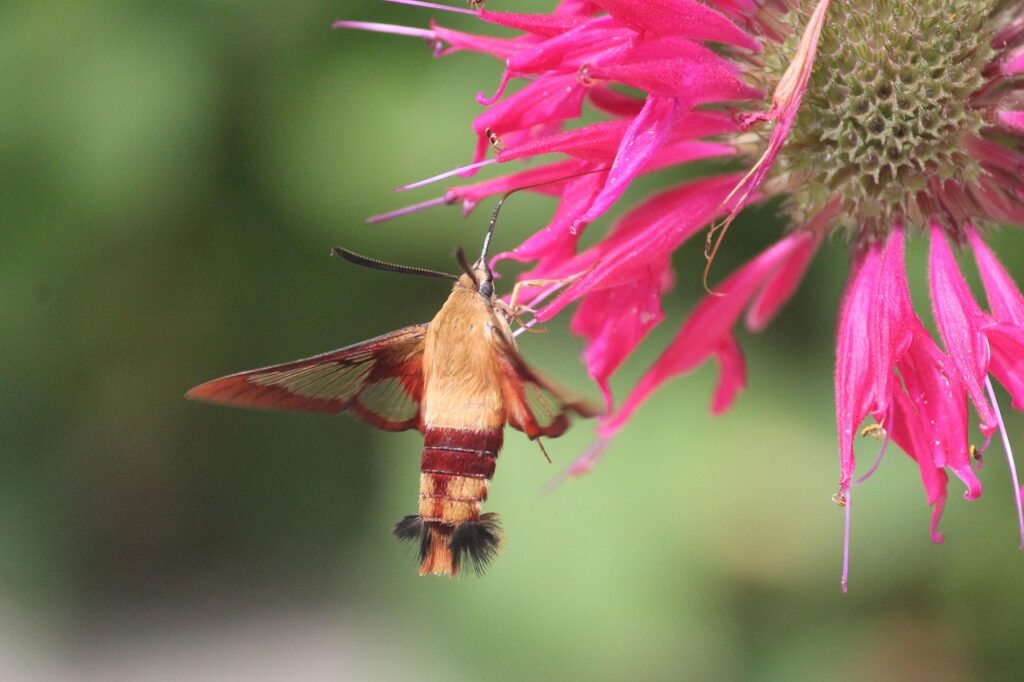
Many ecologically minded gardeners grow monarda for the many benefits they provide to native species. Here’s a short list of some native species that rely on monarda:
- Ruby-throated Hummingbird (Archilochus colubris) – Primarily attracted to Monarda didyma (Bee Balm) for nectar.
- Honeybee (Apis mellifera) – Pollinates Monarda didyma (Bee Balm) and Monarda fistulosa (Wild Bergamot), collecting nectar and pollen.
- Bumblebee (Bombus spp.) – Various species, such as Bombus impatiens and Bombus terrestris, are attracted to Monarda didyma and Monarda fistulosa for nectar.
- Fritillary Butterfly (Euptoieta claudia) – Nectar feeder on Monarda didyma.
- Tiger Swallowtail Butterfly (Papilio glaucus) – Often visits Monarda didyma and Monarda fistulosa for nectar.
- Great Spangled Fritillary (Speyeria cybele) – Found feeding on the nectar of Monarda didyma and Monarda fistulosa.
- Painted Lady Butterfly (Vanessa cardui) – Feeds on Monarda didyma.
- Small Carpenter Bee (Ceratina spp.) – A common pollinator of Monarda didyma and Monarda fistulosa.
- Black Swallowtail Butterfly (Papilio polyxenes) – Attracted to the nectar of Monarda fistulosa.
- Northern Long-Tailed Skipper (Urbanus proteus) – Visits Monarda didyma for nectar.
Collecting Monarda Seed

Harvesting Monarda seeds is a straightforward process, but timing is key to ensure that you collect seeds at their peak for the best germination rate.
The best time to collect Monarda seeds is once the flower heads have dried and turned brown, typically in late summer to early fall, depending on the variety and climate.
To collect Monarda seeds, follow these steps:
Wait for Seed Maturity
Allow the flower heads to remain on the plant until they are fully dried and brown. You can tell they are ready for harvest when the seed heads are dry to the touch, and the seeds inside are firm.
Cut the Seed Heads
Using clean scissors or pruning shears, carefully cut the dried flower heads from the plant. Make sure to leave a bit of stem attached for easier handling.
Extract the Seeds
Gently crush or rub the seed heads between your fingers to release the tiny black seeds. You can also place the seed heads in a paper bag or container and shake them to loosen the seeds.
Clean the Seeds
Once the seeds are extracted, remove any remaining plant material, such as husks or debris. You can do this by lightly blowing on them or using a fine mesh strainer to sift out the impurities.
Store the Seeds
Store the cleaned seeds in a cool, dry place in an airtight container. A small envelope, glass jar, or seed packet works well. Label the container with the variety and the date of collection to keep track of your seeds.
Properly harvested and stored, you can keep Monarda seeds for up to two years, but the sooner they are used, the higher the likelihood of successful germination.
Bring Beauty and Pollinators to Your Garden by Growing Monarda
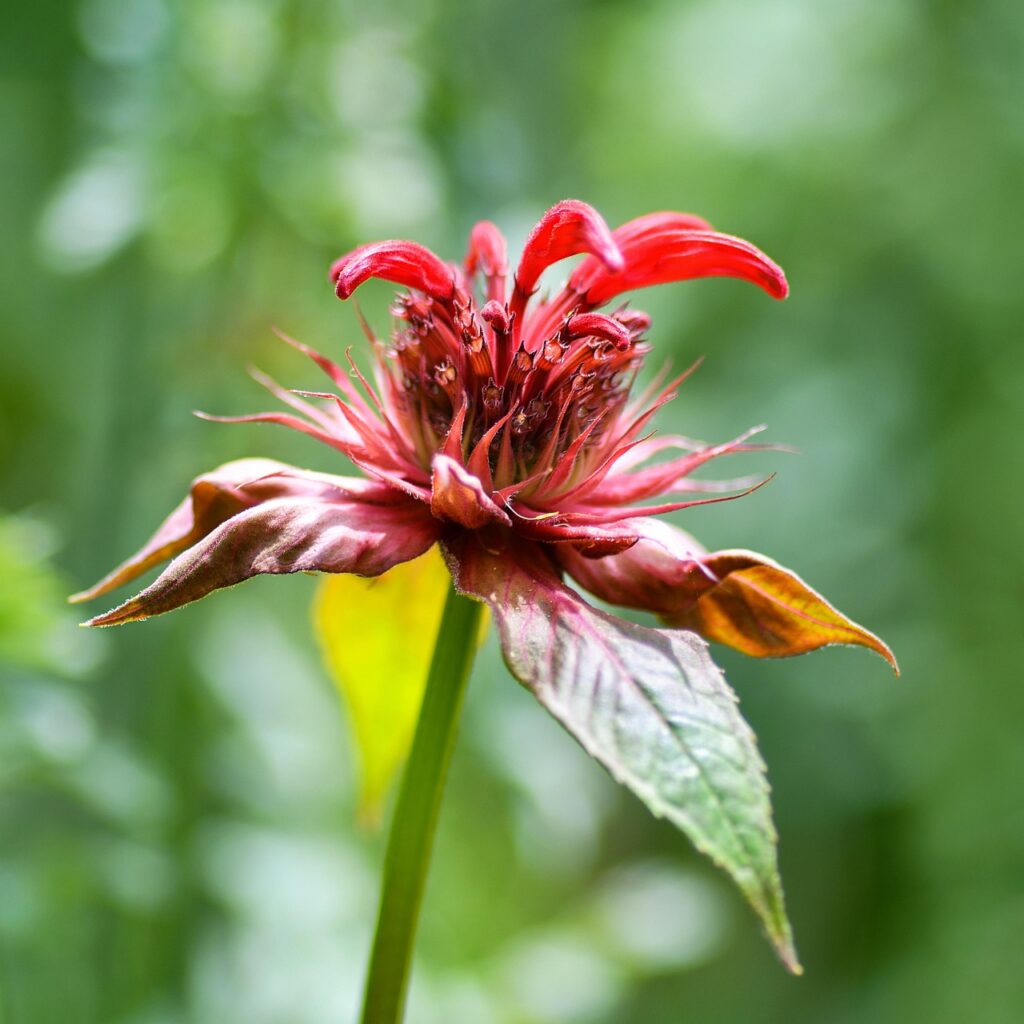
Monarda is a versatile, beautiful plant that not only adds vibrant color and texture to your garden but also supports a wide range of wildlife, particularly pollinators like bees, butterflies, and hummingbirds.
Whether you’re starting seeds indoors, sowing them outdoors, or adding them to your landscape, Monarda is an excellent choice for both novice and seasoned gardeners alike.
Its stunning flowers, ease of care, and benefits to the ecosystem make it a must-have for any garden, and with a little patience and care, you’ll enjoy its beauty season after season.
So, why not take the plunge and start your own Monarda garden today? With its many varieties and valuable role in supporting pollinators, your garden will thrive while contributing to the health of your local environment.
Last update on 2025-08-07 / Affiliate links / Images from Amazon Product Advertising API
This product presentation was made with AAWP plugin.



